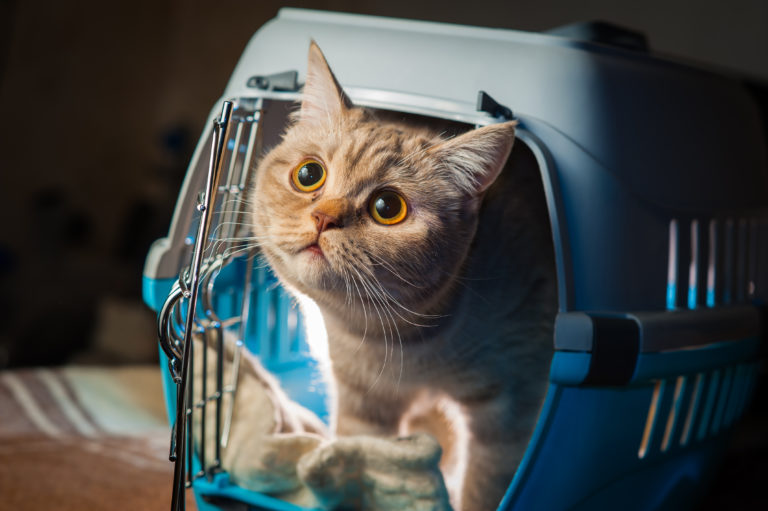Cats don't like to travel. Every change in location is a cause of sheer stress for these sensitive animals, since unfamiliar sounds and smells make even cats with a robust nature nervous. Nevertheless, pet owners must occasionally subject their cat to a change in location – be it for an annual veterinary appointment, moving house or a long holiday. Travelling by car may not be your cat's preferred method of transport, but with a little preparation you can do away with its fear of travelling.
Travelling by Car with Cats
Safety first
There are probably hardly any cats that willingly enter their carry case, because its appearance and odour ultimately remind them of unpleasant trips to the vet or long car journeys. Nonetheless, cats must be safely coffered during car journeys, which is only possible in hard plastic carry cases, wicker baskets or stable textile bags permitted for transporting animals. It’s tempting to put on your cat’s collar, harness and lead, but they don’t protect it sufficiently from accidental injuries. What’s more, a cat wandering around a car can cause life-threatening injuries, since they can jump onto the headrest, their caregiver’s lap or hide under the accelerator with such ease… Only an approved and secure carry case or box is suitable for transporting cats.
Before the journey
Safely stowing your cat away in a transport box is the first step for a secure car journey. In order to make it easier for your cat to enter the box, it is recommended to make it appealing to your feline friend. Instead of only getting the box out for unpleasant vet appointments, you can take it out into the living area several days or even weeks in advance. Valerian and catnip make the smell of the transport box attractive and help nervous cats to relax. Pheromone sprays like Feliway and Felifriend have a similar effect. Use little treats and integrate the box into daily play sessions, so that your cat learns to associate it with something positive. As soon as it has overcome its fear of this big, unpleasant smelling box, you can even try to tempt it inside with the help of a toy, play fishing rod or a treat. It’s important not to close the door and to ensure that your cat feels in no way at all constricted. Your cat should be allowed to leave the box at any time.
During the journey
Of course, this doesn’t apply on the day you’re actually going somewhere… Before the journey, stow your cat safely away in the transport box and this time shut the door so that it can’t escape. Placing an old towel in the box makes the spell in the box more comfortable for your cat and absorbs potential mishaps, because not just nervous cats empty their bladder unintentionally… The car journey can often lead to your cat becoming nauseous and vomiting. In the car itself, the box will be fastened to the seat. Only by doing do can you ensure that the box doesn’t fall from the seat when you brake or speed up, injuring your cat. Naturally you may also wish to avoid taking your hand from the wheel whilst driving in order to catch a slipping transport box…
In order to make the journey as pleasant as possible for your cat, you can quickly air the car beforehand. All windows should be closed during the journey, as long as the temperature in the car allows it. Most cats react sensitively to draughts… Our cats also have very sensitive hearing, so ideally turn off the radio and stereo equipment. You are the point of contact for your cat in unfamiliar situations. Talk to it calmly, both to relax your cat and you yourself as the owner.
Regardless of how long the journey takes, you should feed your cat and offer it water throughout. The under-layer of the box may also need changing… To prevent your cat from escaping, the car and cage doors should never be opened at the same time. Even if it’s a journey of just a few minutes in duration or several hours, you’re best off still leaving your cat in the transport box, because there it will definitely feel safer than in the unfamiliar car interior…
After the journey
Finally, you’ve done it! At the end of the journey, your cat will possibly feel slightly wobbly. It may have vomited, but even if this isn’t the case, it will probably first of all wish to clean itself in peace and quiet… Give your cat the time it needs to feel secure once again. Ideally, leave the transport box in the cat’s sphere of action for a few days and repeat the exercises you carried out beforehand to get it used to the box.
All the best for you and your cat!
